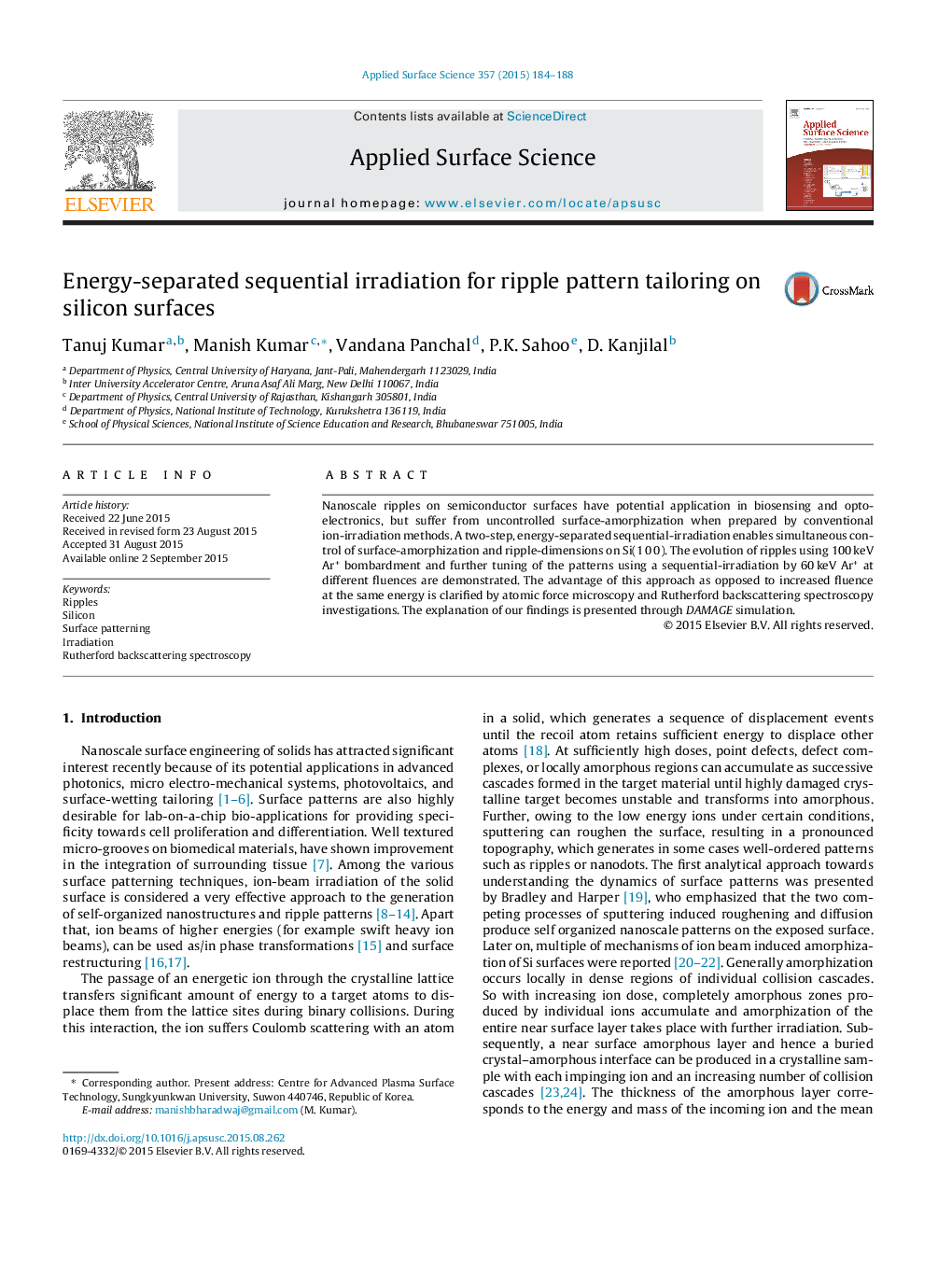| Article ID | Journal | Published Year | Pages | File Type |
|---|---|---|---|---|
| 5348317 | Applied Surface Science | 2015 | 5 Pages |
Abstract
Nanoscale ripples on semiconductor surfaces have potential application in biosensing and optoelectronics, but suffer from uncontrolled surface-amorphization when prepared by conventional ion-irradiation methods. A two-step, energy-separated sequential-irradiation enables simultaneous control of surface-amorphization and ripple-dimensions on Si(1Â 0Â 0). The evolution of ripples using 100Â keV Ar+ bombardment and further tuning of the patterns using a sequential-irradiation by 60Â keV Ar+ at different fluences are demonstrated. The advantage of this approach as opposed to increased fluence at the same energy is clarified by atomic force microscopy and Rutherford backscattering spectroscopy investigations. The explanation of our findings is presented through DAMAGE simulation.
Related Topics
Physical Sciences and Engineering
Chemistry
Physical and Theoretical Chemistry
Authors
Tanuj Kumar, Manish Kumar, Vandana Panchal, P.K. Sahoo, D. Kanjilal,
